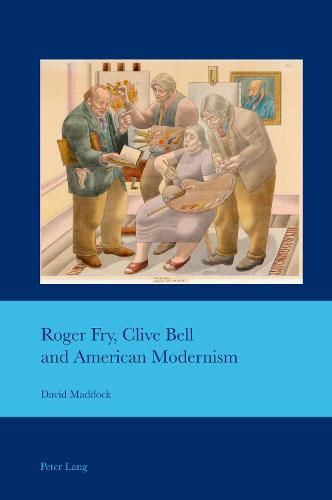Readings Newsletter
Become a Readings Member to make your shopping experience even easier.
Sign in or sign up for free!
You’re not far away from qualifying for FREE standard shipping within Australia
You’ve qualified for FREE standard shipping within Australia
The cart is loading…






When the Bloomsbury critics Roger Fry and Clive Bell introduced an aesthetically conservative English public to recent Parisian avant-garde painting, they explained its disconcerting imagery by way of a late nineteenth-century metaphysical tradition which had long intrigued musicians and Symbolist writers on the European continent. The Post-Impressionist aesthetic they devised advocated a direct response to the formal ingenuity of the work of art without recourse to prior knowledge and emphasized the significance of visionary genius, albeit to the detriment of narrative acuity and technical accomplishment, values hitherto upheld by the Edwardian art establishment. The provocation was calculated, the author suggests, and its domestic ramifications were predictable: the reaction of an Anglo-conformist public in New York, on the other hand, was anything but.
Recreating an Anglo-American dialogue inspired by Fry and Bell, and framed within a period encompassing Fry’s Manet and the Post-Impressionists exhibition in 1910 and Alfred Barr Jr’s Cubism and Abstract Art exhibition in 1936, the author demonstrates how key components of Bloomsbury’s aesthetic bypassed a pre-existent modernist practice in New York and were instead taken up by an urban intelligentsia which adapted them to the requirements of an increasingly professionalized institutional practice during the 1920s.
$9.00 standard shipping within Australia
FREE standard shipping within Australia for orders over $100.00
Express & International shipping calculated at checkout
When the Bloomsbury critics Roger Fry and Clive Bell introduced an aesthetically conservative English public to recent Parisian avant-garde painting, they explained its disconcerting imagery by way of a late nineteenth-century metaphysical tradition which had long intrigued musicians and Symbolist writers on the European continent. The Post-Impressionist aesthetic they devised advocated a direct response to the formal ingenuity of the work of art without recourse to prior knowledge and emphasized the significance of visionary genius, albeit to the detriment of narrative acuity and technical accomplishment, values hitherto upheld by the Edwardian art establishment. The provocation was calculated, the author suggests, and its domestic ramifications were predictable: the reaction of an Anglo-conformist public in New York, on the other hand, was anything but.
Recreating an Anglo-American dialogue inspired by Fry and Bell, and framed within a period encompassing Fry’s Manet and the Post-Impressionists exhibition in 1910 and Alfred Barr Jr’s Cubism and Abstract Art exhibition in 1936, the author demonstrates how key components of Bloomsbury’s aesthetic bypassed a pre-existent modernist practice in New York and were instead taken up by an urban intelligentsia which adapted them to the requirements of an increasingly professionalized institutional practice during the 1920s.